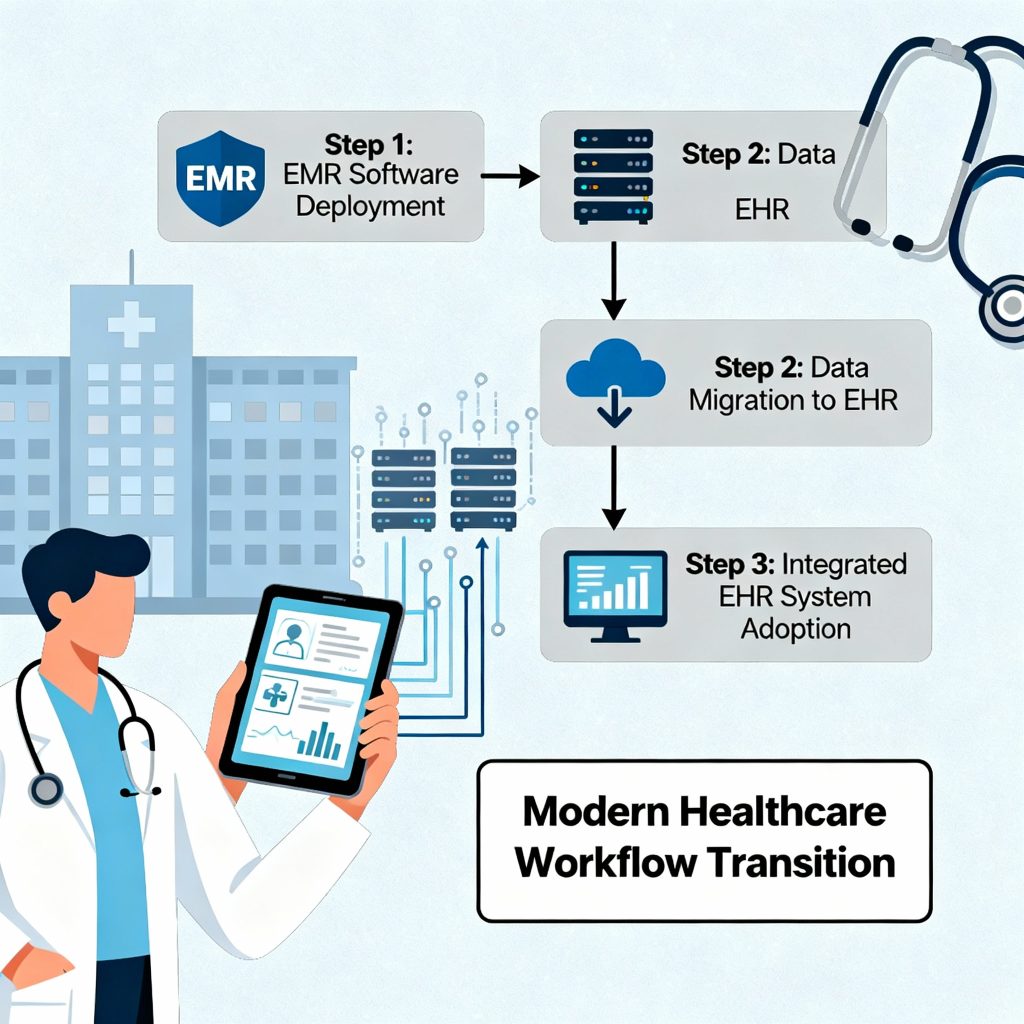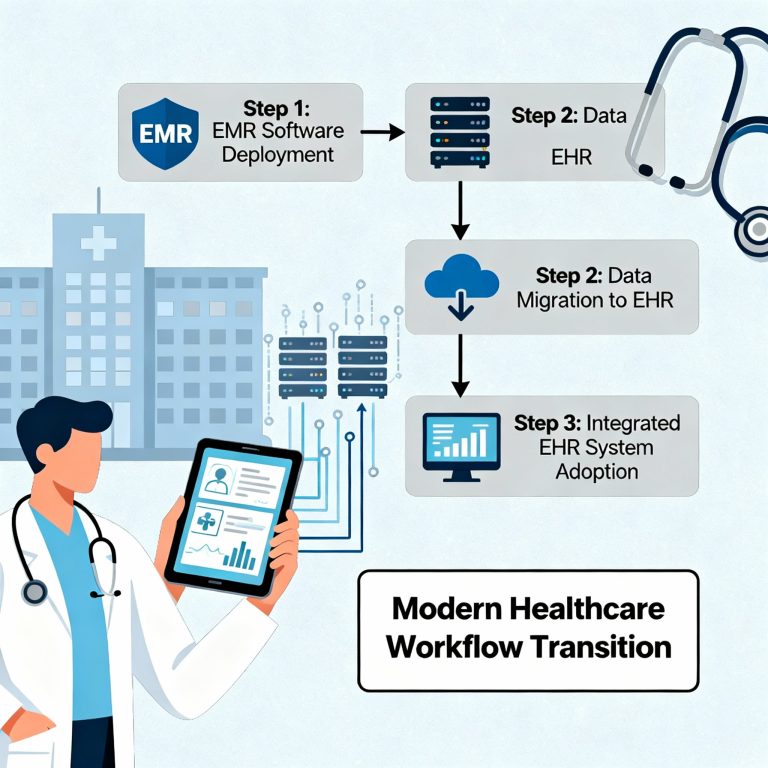The healthcare industry is rapidly evolving, and technology drives this transformation. One of the most impactful changes in recent years has been the shift from EMR software to advanced EHR software and comprehensive electronic health record systems. The adoption of Electronic Medical Record Service has completely transformed how doctors, hospitals, and clinics manage patient data.
In this guide, we explore the journey from EMR to EHR, explain why electronic medical records matter, and highlight their growing importance in today’s digital healthcare landscape.
Understanding the Basics: EMR vs. EHR
Let’s clarify the difference between EMR and EHR. EMR software provides a digital version of a patient’s chart used within a single healthcare facility. It includes diagnoses, medications, and treatment history. However, EMR cannot easily share data outside one clinic or hospital.
EHR software goes beyond one practice. Electronic health record systems allow data sharing across different healthcare providers. EHR ensures continuity of care when patients visit specialists, diagnostic centers, or hospitals in other cities.
While EMR software offers a solid start toward digitization, Electronic Medical Record Service powered by EHR delivers a broader and more collaborative solution.
The Role of Electronic Medical Records in Healthcare
Electronic medical records do more than store information digitally. They improve efficiency, reduce errors, and enhance patient outcomes. Doctors can access patient history in seconds rather than searching through piles of paperwork, enabling faster and more accurate decisions.
EMR software also supports lab integration, prescription management, and secure data storage. Hospitals can manage large volumes of patients without compromising quality. Most importantly, Electronic Medical Record Service protects patient information, reducing data loss or mismanagement.
Why EHR Software is a Step Ahead
EHR software provides a more comprehensive solution than EMR software. Electronic health record systems promote collaboration and data sharing among multiple healthcare organizations.
For example, when a general physician refers a patient to a cardiologist, the EHR system lets the specialist instantly access the patient’s previous records. This eliminates repeated tests and unnecessary delays.
EHR software also offers remote access, mobile integration, and real-time updates. Both patients and providers benefit from better communication and seamless information flow.

Advantages of Electronic Health Record Systems
The shift to electronic health record systems brings numerous advantages:
- Improved Accessibility – Doctors can access medical records anytime, anywhere.
- Enhanced Accuracy – EMR reduces manual paperwork, minimizing errors.
- Collaboration Across Providers – EHR allows healthcare providers to work together effectively.
- Time and Cost Savings – Quicker access to records and automated processes save both time and money.
- Better Patient Outcomes – Real-time access helps deliver faster and more precise treatments.
Electronic Medical Record Service now integrates AI tools, predictive analytics, and telemedicine features. These systems not only store data but also help providers deliver smarter healthcare.
Growing Importance of Electronic Medical Record Services
Electronic Medical Record Service has become indispensable. Rising patient volumes and increasing expectations make efficient systems essential.
Governments worldwide, including India, encourage EHR software adoption to promote transparency and accountability. Initiatives like digital health missions aim to provide secure electronic medical records to every citizen.
Patients also want more control over their health data. Patient portals give individuals access to their records, making them more involved in their treatment journey. The importance of EMR and EHR adoption continues to grow.
Challenges in Adopting EMR Software and EHR Systems
Despite their benefits, EMR and EHR adoption comes with challenges. Smaller healthcare providers may struggle with the costs of implementing advanced electronic health record systems. Data privacy and security also remain concerns.
Healthcare providers can overcome these challenges through proper training, affordable solutions, and strong data protection measures. As technology becomes more accessible, even smaller clinics increasingly adopt EMR software and EHR solutions.
The Future of EMR Software to EHR Systems
The future of EMR and EHR adoption looks promising. Cloud storage, AI, and mobile-friendly interfaces will make electronic health record systems even more powerful.
Telehealth and remote monitoring will further integrate EHR into patient care. Healthcare providers who invest in Electronic Medical Record Service now will stay ahead of the curve.
Patients will continue driving this change. Their demand for faster, smarter, and personalized healthcare ensures that electronic medical records remain crucial.
Conclusion: EMR Software to EHR Systems
The journey from EMR software to EHR software and advanced electronic health record systems marks a key milestone in healthcare’s digital transformation. EMR provides a strong foundation, while Electronic Medical Record Service supported by EHR enables seamless collaboration, better data management, and improved patient outcomes.
Electronic medical records are not just storage tools—they represent a future where healthcare is smarter, faster, and more reliable. Hospitals, clinics, and healthcare providers must embrace these technologies to stay competitive in a rapidly evolving industry.

